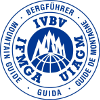Handix >
Training for the access tests
Training for the access tests
Every year the different education institutions on the modalities of mountain, climbing and ravines convoke specific access tests for the different modalities.
In order to make you prepared enough to take the tests and with the maximum guarantees that you’ll pass the tests we offer you, hand in hand with a IFMGA High Mountain guide, to make some training days depending on your necessities to prepare them. Remember that, depending on the speciality and the modalities you want to prepare, we can set a programme with a variable number of days.
The access tests requirements are:
FIRST LEVEL:
- First Part: Completing a trail through a diverse mountain path with 1.500 positive slope metres accumulated, carrying a 10kg backpack and in the expected time determined by the tribunal.
- Second part: Carrying the 10kg backpack and in the expected times determined by the tribunal, completing three marked paths, one with a minimum 50 metres grass slope, another one of a minimum 50 metres of rocky path and a 50 metres path of scrambling and a ledge.
SECOND LEVEL – RAVINES:
- First part: Completing a trail through a diverse mountain path with 1.500 positive slope metres accumulated, carrying a 10kg backpack and in the expected time determined by the tribunal.
- Second part: Completing in the determined times by the tribunal:
- The climb of an equipped path with a V difficulty grade and a minimum length of 20 metres. (In case the candidate falls, he or she’ll have to start the itinerary again from the start as lead climber).
- Swimming 100m in calm or rough waters, wearing a complete neoprene suit.
- Submerge to a 2,5m deep using the adequate technique, wearing a complete neoprene suit in the first attempt, with no swimming and no jump.
- To perform a ravine descent in a diverse ground, including marching, overhangs and conventional rappel. No more than three falls will be allowed and you must stay in the track. Every exit will be punished with a 5% of the established time.
- Correctly making the basic knots and correctly making the basic manoeuvres such as making a reunion, securing or rappelling. Always correctly using the technical and specific materials of every sport speciality, without using any other materials than the specific ones and in a sufficient quantity.
SECOND LEVEL – CLIMBING:
- First part: Completing a trail through a diverse mountain path with 1.500 positive slope metres accumulated, carrying a 10kg backpack and in the expected time determined by the tribunal.
- Second part: Completing, in the stablished time, 5 different itineraries in which, in case of falling, the candidate will have to start again from the beginning as a lead climber and correctly using the basic knots and correctly making the basic manoeuvres like making a reunion, securing or rappelling, just like choosing and correctly using the specific climbing material in an adequate quantity of:
- Two different equipped tours ranged as 7a difficulty and a minimum length of 25 metres, in a climb at first sight. You’ll have to shackle at least one.
- Two unequipped tours ranged as 6b difficulty and a minimum length of 25 metres, finishing both.
- An unequipped tour, ranged as A2 difficulty and a minimum length of 25 metres in artificial climbing.
SECOND LEVEL – MID-MOUNTAIN:
- First part: Completing a trail through a diverse mountain path with 1.500 positive slope metres accumulated, carrying a 10kg backpack and in the expected time determined by the tribunal.
- Second part: Completing in the stablished times and wearing a 10kg bag, 5 routes with the following characteristics:
- A marked grass route with a minimum of 50 metres length.
- A marked rocky route with a minimum of 50 metres length.
- A marked route with a rocky ledge and a minimum of 50 metres length.
- A marked route with a snow slope and a minimum of 50 metres length.
- An orientation route with at least 6 beacons and 6km length, measured as “short distance”, passing through all the beacons in the right order.
* getting out of the marked routes will be punished with a 5% of the previously established time.
SECOND LEVEL– HIGH MOUNTAIN:
- First part: Completing with cross country skis a route through a diverse ground, with a 1.500 positive slope metres, carrying a 10kg backpack and in the stablished time by the tribunal.
- Second part: Completing, in the stablished times and correctly making the basic knots and correctly making the basic manoeuvres like making a reunion, securing or rappelling during the climbing tests; not falling during the skiing descents and with the correct method, just like choosing and correctly using the specific climbing material in an adequate quantity of:
- A 6b difficulty route and a minimum 25 metres long in a climb “at first sight”.
- An unequipped 6a difficulty route and a minimum 25 metres long, in a climb “at first sight” and wearing rigid boots.
- An unequipped A1 / A2 difficulty route with a minimum 25m length in artificial climbing.
- A snow and ice route, progressing with the “all the points” technique in a circuit with slopes of about 35º a 45º and a minimum 25 metres length.
- A climbing snow and ice route in 80º and 90º slope and a minimum 25 metres length.
- Skiing down through a slope, preferably with compact snow and a minimum length of 150m and a 30º slope, making parallel turns extension and flexion.
- Skiing down through a slope, preferably with non-treated snow and a minimum length of 150 metres and a 30º average slope, with a bumpy surface and making turns adapted to the conditions of snow during the test.



